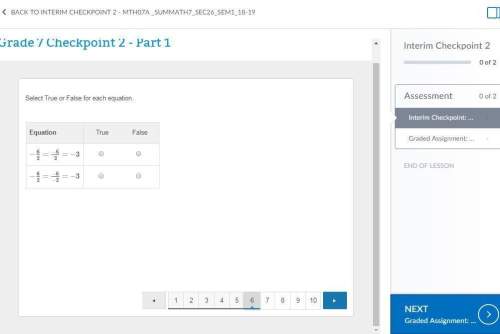
Mathematics, 04.07.2019 23:30 raprocksbob
1in old- growth forests of douglas fir, the spotted owl dines mainly on flying squirrels owl population squirrel population jlh if we let at time k 3 such that 4 and the predator-prey matrix for these two populations is a 325 1.2 = akx r+1=ax and the eigenpairs for a are (a 20 20 (here is the wolfram alpha link to find the eigenvalue/vector pairs) 18 if the initial population of owls and squirrels is 18 and 29, o 29
#1c what will eventually happen to the population of owls and squirrels (kco)? 3 4 #1d suppose instead that the predator-prey matrix for these two populations is a - .5 1.2 what will eventually happen to the population of owls and squirrels (k -+ 00) based on this predator-prey matrix?

Answers: 2


Another question on Mathematics

Mathematics, 21.06.2019 17:50
F(x) = x2 − 9, and g(x) = x − 3 f(x) = x2 − 4x + 3, and g(x) = x − 3 f(x) = x2 + 4x − 5, and g(x) = x − 1 f(x) = x2 − 16, and g(x) = x − 4 h(x) = x + 5 arrowright h(x) = x + 3 arrowright h(x) = x + 4 arrowright h(x) = x − 1 arrowright
Answers: 2

Mathematics, 21.06.2019 23:00
Given the expression (7 ? 4i) ? (2 + 6i), perform the indicated operation and write the answer in the form a + bi.
Answers: 1

Mathematics, 22.06.2019 02:00
Point a is at 12, and point d is at 56. point c is midway between a and d, and point b is midway between a and c. which of these is the coordinate of b?
Answers: 3

Mathematics, 22.06.2019 03:00
In this problem, we explore the effect on the standard deviation of multiplying each data value in a data set by the same constant. consider the data set 14, 6, 8, 15, 15. (a) use the defining formula, the computation formula, or a calculator to compute s. (round your answer to one decimal place.) s = 4.28 (b) multiply each data value by 3 to obtain the new data set 42, 18, 24, 45, 45. compute s. (round your answer to one decimal place.) s = 12.83 (c) compare the results of parts (a) and (b). in general, how does the standard deviation change if each data value is multiplied by a constant c? multiplying each data value by the same constant c results in the standard deviation remaining the same. multiplying each data value by the same constant c results in the standard deviation being |c| times as large. multiplying each data value by the same constant c results in the standard deviation increasing by c units. multiplying each data value by the same constant c results in the standard deviation being |c| times smaller. (d) you recorded the weekly distances you bicycled in miles and computed the standard deviation to be s = 3.8 miles. your friend wants to know the standard deviation in kilometers. do you need to redo all the calculations? yes no given 1 mile ≠1.6 kilometers, what is the standard deviation in kilometers? (enter your answer to two decimal places.)
Answers: 1
You know the right answer?
1in old- growth forests of douglas fir, the spotted owl dines mainly on flying squirrels owl populat...
Questions



Biology, 20.07.2019 07:00

Mathematics, 20.07.2019 07:00


Biology, 20.07.2019 07:00




Biology, 20.07.2019 07:00

Computers and Technology, 20.07.2019 07:00


Mathematics, 20.07.2019 07:00




Mathematics, 20.07.2019 07:00






